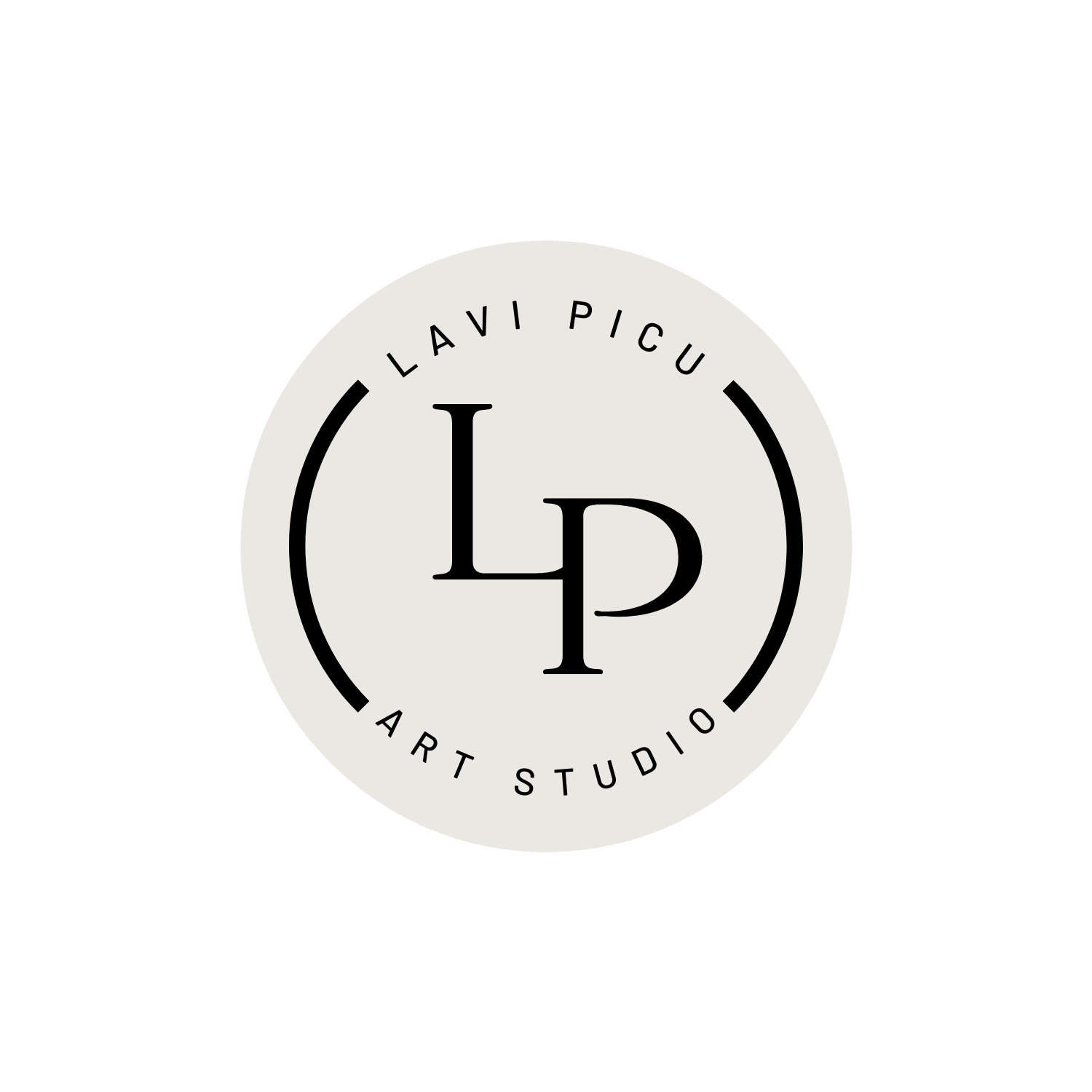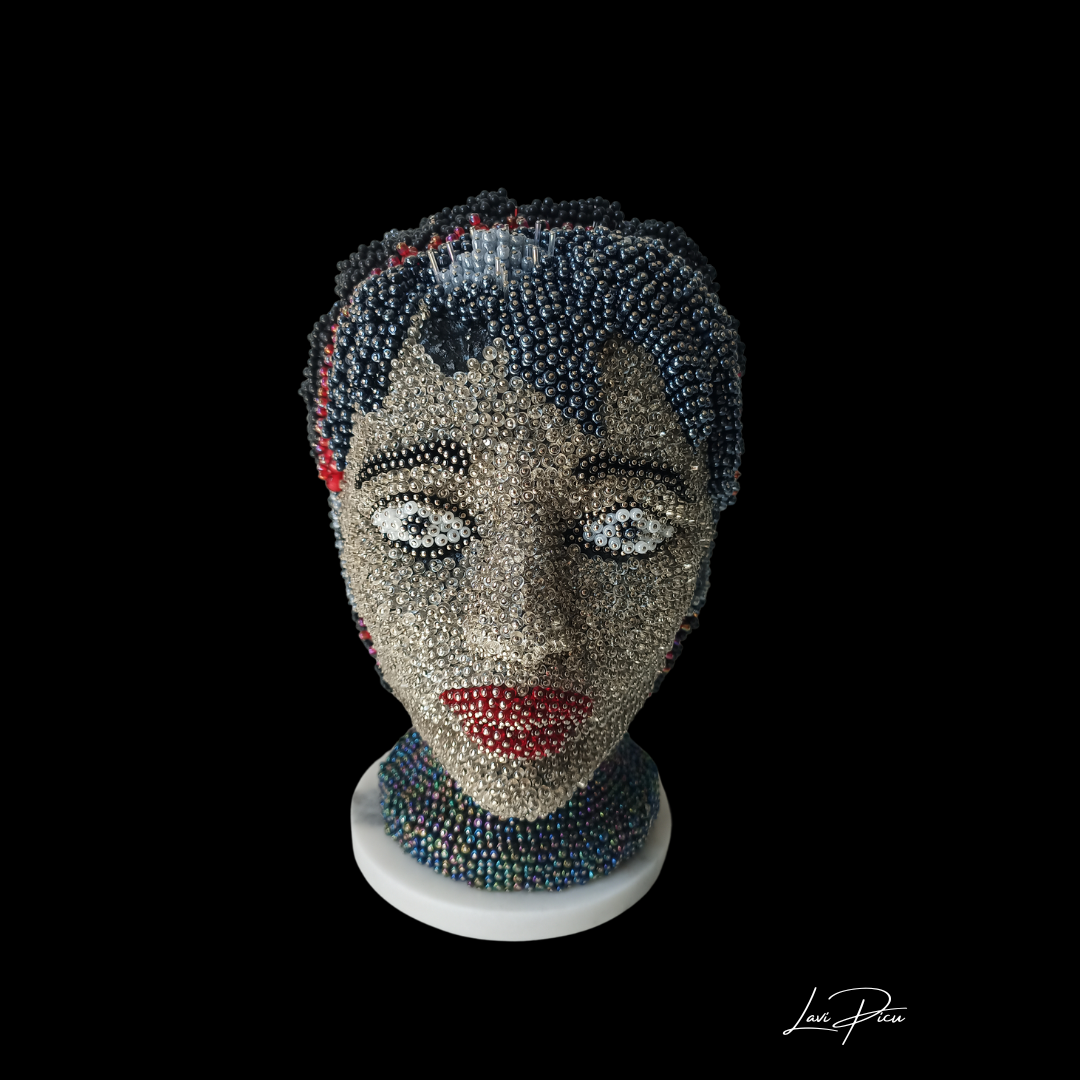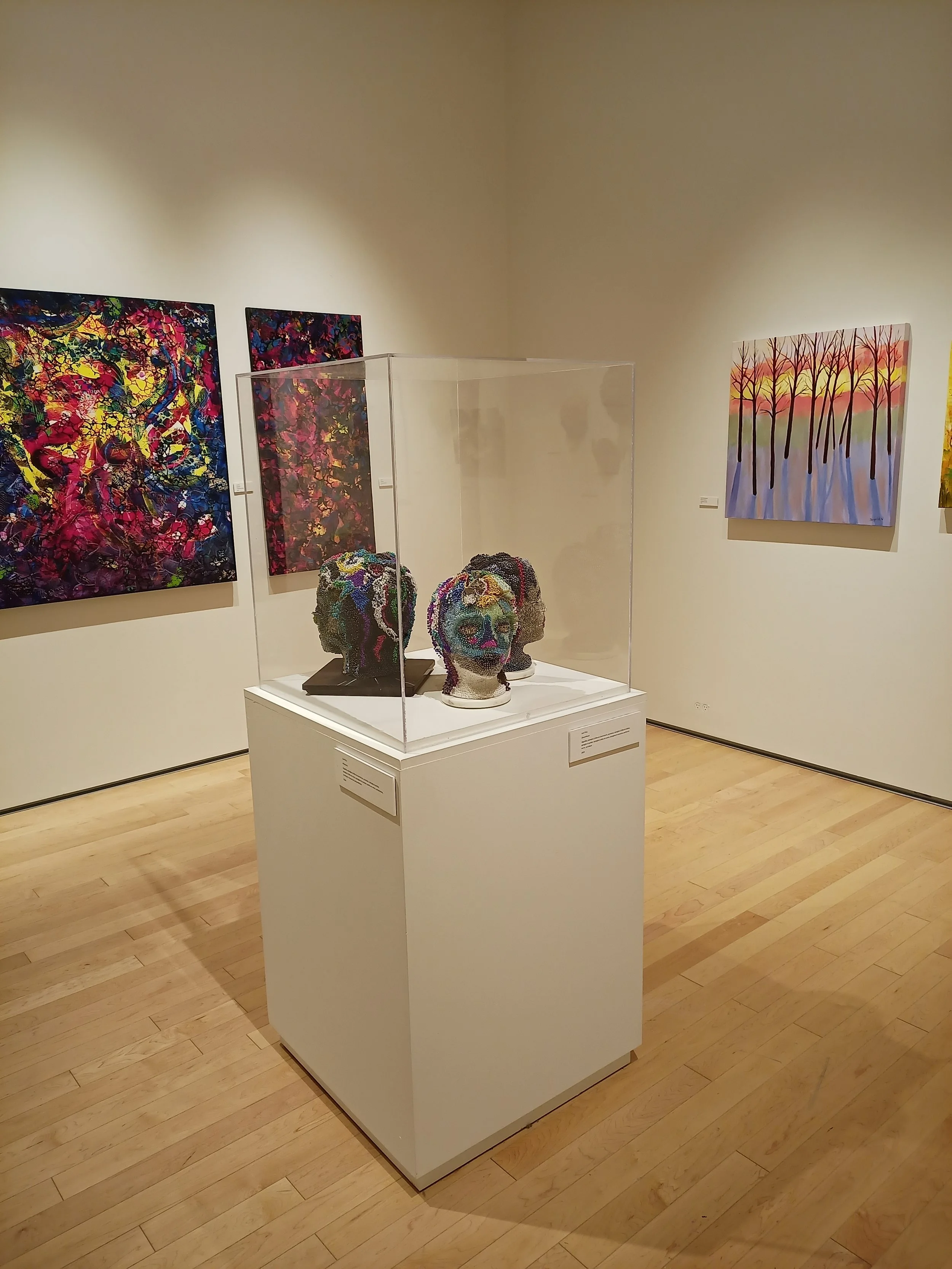Giving Shape to Pain: The Story Behind My Latest Sculptures
Sculpting the Invisible: Chronic Pain and Altered Sensations
Art has always been my refuge, but over the last decade, it’s become more than that. It’s been my voice when words fail, my way of making sense of the invisible battles I fight every day. My latest series of sculptures is my most personal work yet. Through these pieces, I’ve tried to give shape to the intangible, to the chronic pain that have defined my journey with Lyme disease, Lupus, and neuropathy, particularly the altered sensations, which are a constant part of my life.
Discovering Lyme and Lupus Neuropathy: Giving My Pain a Name
Over the years, I’ve experienced nearly every form of altered sensation—burning, electric shocks, itching, tingling, and that strange crawling feeling under the skin. Sometimes it feels like water or blood is trickling down my skin, even though nothing is there. At other times, it feels like I’m being squeezed tightly or like insects are swarming all over me. These sensations come in unpredictable waves, lasting from seconds to minutes, turning my body into a source of constant distraction and discomfort.
When I first began experiencing these symptoms, I had no idea what was happening to me. The sensations were so bizarre, and doctors couldn’t explain them. It wasn’t until much later in my journey with Lyme disease that I discovered these altered sensations had names—names like allodynia, paraesthesia, dysesthesia, and hyperalgesia.
Discovering that there was a medical explanation for my symptoms felt like a victory. For years, I had been told that these sensations were “all in my head,” and now I had proof that they were real. My pain had a name, and that validation gave me the strength to keep fighting, to keep creating.
Living with Altered Sensations: Allodynia, Dysesthesia, Paraesthesia, and Beyond
My experience with altered sensations—whether paraesthesia, dysesthesia, or allodynia—has become a central theme in my work. These sensations are classified under a broader umbrella of "sensory symptoms"—feelings that seem to occur in the skin but are actually the result of damage to the nerves in the brain and spinal cord. Altered sensations can occur in any part of the body, most commonly in the face, body, arms or legs. It may occur on just one side of the body or on both sides.
For those unfamiliar, paraesthesia, dysesthesia and allodynia are altered sensations—tingling, burning, numbness, or even stabbing pain—often described as feeling like needles or pins beneath the skin. Unlike visible symptoms that others can recognize and empathize with, these sensations are ghostly and internal. They are ever-present but hard to explain, let alone validate. The loneliness of this internal suffering was the driving force behind my decision to sculpt it, to make the unseen visible.
The Idea Behind the Medium: pins, Needles, and Glass Beads
As an artist, I've always felt drawn to unusual materials, but for this series, the medium itself is central to the message. I began working with thousands of pins, needles, push pins, and glass beads—small, sharp objects that most people associate with pain or discomfort. It started as an experiment, a way to externalize the constant sensation of being poked and prodded by my own nervous system.
But as I worked, something clicked: these materials weren’t just metaphorical; they were physical representations of the sensations I endure. The process of placing each tiny needle, pin, or bead into the sculptures became meditative, almost a reverse process of my own experience with pain. Instead of the pain being inflicted upon me, I was controlling it, giving it a place and a form. I became fascinated by the idea that I could 'sculpt' my pain, instead of being sculpted by it.
The faces in my sculptures are deliberately calm, even serene. I wanted to convey how we—those of us with chronic illnesses—often present a mask to the world. We have to, in order to function in society, even while our nervous systems are screaming beneath the surface. The pins and needles are embedded into the heads, as if erupting from the skull, a physical manifestation of the sensations that lie just under my skin, that riddle my body, sensations that are hard to explain but impossible to ignore.
Sculpting the invisible: A reverse process that gives shape to pain
This is where my art comes in. The process of creating this series of sculptures was both a release and a reclamation. Instead of being passive in the face of my pain, I chose to take control of it.
The creative process felt like a reverse catharsis. Normally, art is seen as a way to release or escape emotion, but in this case, I wasn’t escaping my pain—I was inviting it in, dissecting it, and ultimately giving it shape. Instead of running from the discomfort, I allowed it to guide me.
There’s something powerful about seeing these forms in front of me, sharp and tangible, something that has lived in the shadows of my nerves for so long. Each sculpture is a head, representing a human mind trying to cope, to process, to live. The pins and needles become part of the form, just as pain becomes part of our existence when we live with chronic illness.
The sculptures, with their calm faces and sharp, invasive elements, symbolize the duality of chronic illness: the serene exterior we often present to the world, and the constant, invisible battle raging beneath the surface.
These sculptures aren’t just art—they are a window into the reality of living with chronic pain, specifically the altered sensations caused by conditions like paraesthesia, dysesthesia and allodynia.
“PARAESTHESIA” - 10.5” x 8” x 8.5” - Needles, aluminum head pins, push pins, quilting pins, glass headed pins, sewing pins, glass beads, styrofoam, acrylic paint
Paraesthesia: The Sensation of Pins and Needles
Most people are familiar with paraesthesia, even if they don’t know the name for it. It’s that familiar prickling or tingling sensation when you’ve been sitting in one position for too long, often described as “pins and needles.” But for me, it’s not just a fleeting annoyance—it’s a constant, often debilitating presence. Paraesthesia, in my case, is caused by a combination of fibromyalgia, compressed nerves, and neuropathy. It’s worsened by my Lupus and a family history of rheumatoid arthritis, which causes inflammation and compresses nerves in the joints.
The symptoms of paraesthesia are varied and unpredictable: tingling, numbness, prickling, and even aching or burning pain. It can feel as though my limbs have “fallen asleep” or, more disturbingly, as though insects are crawling just beneath my skin. Sometimes the affected area feels unnaturally hot or cold, and these sensations can spread outward, radiating in unpredictable waves.
These sensations stem from nerve damage. The nerves, which should be sending clear messages to my brain, are now confused, transmitting distorted signals. Sometimes it feels like my brain doesn’t know what’s happening, interpreting these abnormal signals as something it can relate to—itching, burning, or crawling sensations. It’s as if the brain, trying to make sense of these misfires, grabs for the nearest explanation. Yet, despite all this, the skin and tissues themselves are fine—it’s the nerves that are misfiring.
This feeling of constant miscommunication is what I wanted to capture in my sculptures. The thousands of pins and needles lodged into each head represent this ongoing sensation—something that is invisible yet always present, something that affects my perception of my body even though it is impossible to see.
"DYSESTHESIA” - 10” x 8” x 9” - Needles, aluminum head pins, brass ball head pins, push pins, quilting pins, glass headed pins, sewing pins, glass beads, styrofoam, acrylic paint
Dysesthesia: The Dantesque Pain
While paraesthesia brings annoying tingling and numbness, dysesthesia is its darker, more painful cousin. The word "dysesthesia" literally means "bad sensation," and that’s exactly what it is. Dysesthesia often manifests as burning, electric shocks, or a feeling like insects crawling under the skin.
Dysesthesia isn’t triggered by external stimuli; it simply exists, appearing as if from nowhere. This altered sensation is both mysterious and relentless, often likened to something out of Dante’s "Inferno." It’s a pain that has no clear source but manages to invade every part of your awareness.
One of the hardest parts of living with dysesthesia is dealing with allodynia—a condition where a light touch that should be painless instead feels excruciating. Imagine the softest brush of your hand across your skin turning into an overwhelming sensation of pain. That reversal, where normal sensations become a source of agony, is what makes dysesthesia so difficult to manage.
These altered sensations, collectively called sensory symptoms, often seem to occur in the skin but are actually caused by nerve damage in the brain and spinal cord. When these nerves misfire, the brain receives confusing signals, interpreting them as something it knows—burning, itching, crawling—when there is no actual harm happening to the body. The result is an endless loop of discomfort that feels as real as any injury.
“ALLODYNIA” - 11” x 9” x 9.5” - Needles, aluminum head pins, push pins, quilting pins, glass headed pins, sewing pins, glass beads, styrofoam, acrylic paint, polyurethane foam
The Art of Validation
This project is deeply personal. It’s rooted in my own experience with Lyme disease, Lupus, and the nerve damage they have caused. For years, I felt as though I was fighting an invisible battle, trying to explain symptoms that others couldn’t see or understand. Even some doctors doubted me, suggesting that the pain was in my head. But through this journey, I’ve learned that my pain is real, and it deserves to be acknowledged.
Art has given me a way to process this journey, to take the sensations that have defined my life and turn them into something tangible. These sculptures are more than just pieces of art—they are my story, my way of making sense of what has often felt senseless.
My hope is that through this work, others will feel seen. That those who suffer from chronic pain and invisible illnesses will recognize themselves in these sculptures and feel validated. And for those who don’t live with these conditions, I hope it sparks empathy, understanding, and a greater awareness of the invisible battles so many of us are fighting.
This series is my attempt to sculpt the invisible—to take the altered sensations that have shaped my life and give them a form that others can see, touch, and understand. Through art, I hope to build empathy and raise awareness for those of us who live with chronic, invisible pain. Pain might be invisible, but that doesn’t mean it can’t be seen. Through my work, I aim to give it shape, voice, and visibility.
Through needlism, I’ve found a way to give shape to the pain, to control what has so often controlled me. These sculptures are my victory, my way of saying, “This pain is real, and it deserves to be seen.”
In creating these works, I’m offering a piece of myself. This series isn’t just about my personal pain; it’s about giving shape to an entire community of people who live with chronic, invisible illnesses. It’s about making the unseen visible, in the most literal way possible.
Moving Forward
The journey with chronic illness is ongoing, but so is the creative process. This series of sculptures may be complete, but the conversation is far from over. There is still so much to explore, both in terms of the art itself and the stories it can tell. I’m eager to see how people interact with these pieces and what they take away from them. For me, each sculpture is a small victory—a moment where I can control the uncontrollable and show the world what it’s like to live with invisible pain.
Through this project, I’ve found a new way to cope with my own journey, and I hope it can serve as a beacon for others, a reminder that their pain is real, it is valid, and it deserves to be acknowledged. Pain might be invisible, but that doesn’t mean it can’t be seen. Through art, it can have a voice.
"Verdun À L'Avant-Scène" Exhibition, QUAI 5160, Salle Denis-Juneau
This series is currently exhibited at QUAI 5160, Maison de la Culture de Verdun, as part of the collective exhibition, Verdun À L’Avant-Scène, an art event that will go on until October 13th, 2024.






